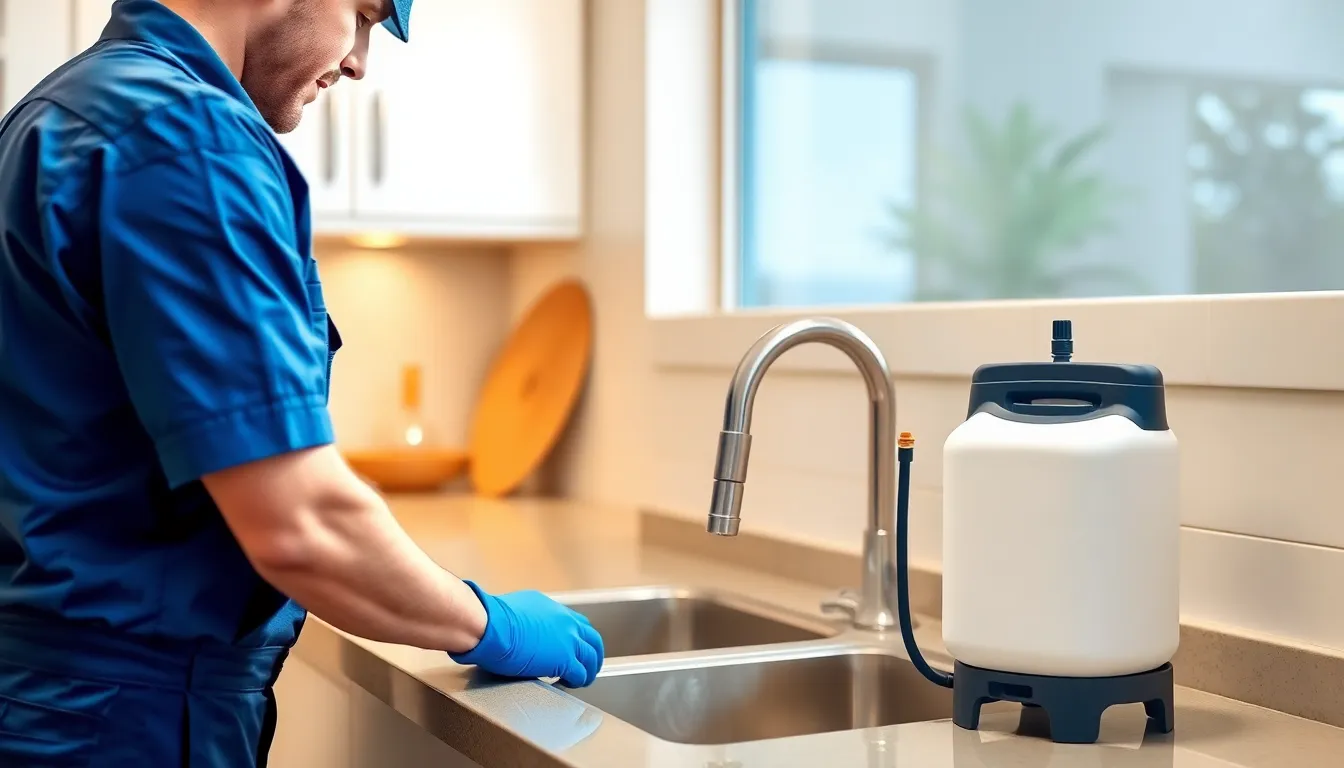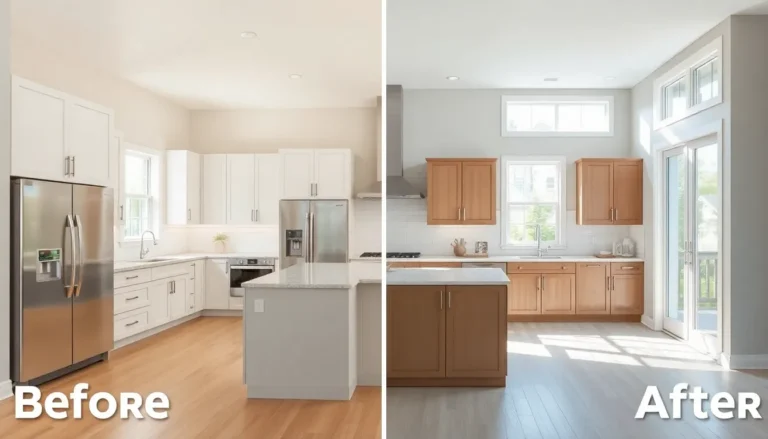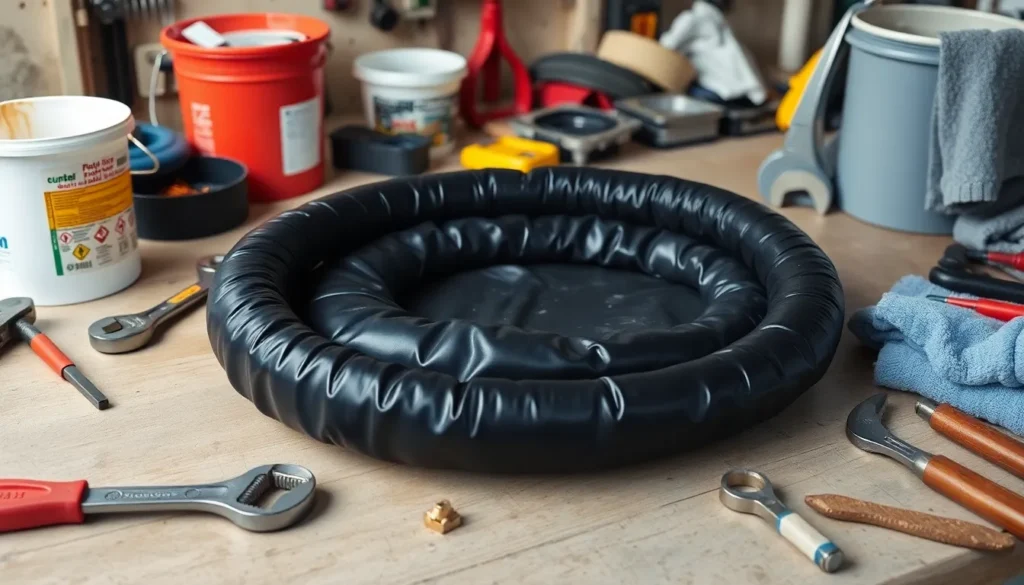Table of Contents
ToggleWhen plumbing problems strike, most people panic like a cat in a bathtub. Enter the plumbing bladder, the unsung hero of home repairs. This handy tool is the secret weapon that can save homeowners from the dreaded clogs and leaks without turning their living room into a water park.
Imagine a flexible bag that can expand and contract, navigating the twists and turns of your pipes like a pro. It’s not just a lifesaver; it’s a game-changer. With a plumbing bladder in hand, tackling stubborn blockages becomes less of a chore and more of an adventure. So, if you’re tired of wrestling with plungers and drain snakes, it might just be time to meet your new best friend in plumbing.
What Is a Plumbing Bladder?
A plumbing bladder serves as an innovative tool for addressing various plumbing challenges. This flexible device can navigate through pipes to tackle clogs and leaks effectively.
Definition and Function
A plumbing bladder is a collapsible rubber or PVC tool designed to fit into different pipe sizes. Upon inflation, it expands within the pipe, creating pressure that dislodges obstructions. Using a plumbing bladder simplifies repairs, making it easier to clear blocked pipes without the need for harsh chemicals. Increased pressure often breaks apart stubborn clogs, restoring proper water flow. This device also aids in detecting leaks, pushing water through compromised areas, and revealing weak spots.
Types of Plumbing Bladders
Several types of plumbing bladders cater to various needs in plumbing repair. Restroom bladders fit toilets specifically, targeting clogs in the toilet trap. Large diameter bladders suit bigger pipes, like those in main sewage lines, capable of clearing significant waste buildup. Smaller bladders work well in kitchen or bathroom sinks, maneuvering through tighter spaces. Specialty bladders may address unique situations, such as those designed for vent pipes. Choosing the right bladder type ensures effective results and efficient plumbing repairs.
Benefits of Using a Plumbing Bladder

Utilizing a plumbing bladder offers several advantages for homeowners. Increased effectiveness during plumbing repairs enhances overall satisfaction.
Improved Water Pressure
A plumbing bladder increases water pressure within pipes. This elevated pressure efficiently dislodges stubborn clogs that traditional methods often fail to address. Homeowners often notice immediate results after using a bladder, as it pushes through built-up debris, restoring proper flow. It easily navigates various pipe sizes, allowing for targeted applications in toilets, sinks, and showers. Immediate relief from slow drains can significantly enhance the household’s water usage experience.
Water Conservation
Water conservation is a critical feature of plumbing bladders. Instead of relying on harsh chemicals, users can efficiently clear clogs with minimal water usage. By restoring flow quickly, the bladder reduces the need for constant water running while attempting to flush out blockages. Enhanced drainage also means reduced risk of water wastage from leaks, contributing to overall water savings in the home. Implementing a plumbing bladder encourages responsible water usage, fostering an eco-friendly approach to plumbing repairs.
Installation Process
The installation process for a plumbing bladder is straightforward. Following a few key steps ensures effective use.
Required Tools
Gather essential tools before starting the installation. A plumbing bladder, adjustable wrench, bucket, and towels serve necessary functions. Ensure availability of a pipe cleaner for pre-cleaning debris. Additionally, having gloves and eye protection for safety is recommended.
Step-by-Step Guide
- Assess the Situation: Identify the area where the clog or leak exists. Knowing pipe dimensions aids in selecting the proper bladder size.
- Prepare the Area: Clear any obstructions around the plumbing fixture. Doing so creates space for effective maneuvering.
- Insert the Bladder: Place the bladder into the pipe until it fits snugly. Confirm a tight seal to enhance pressure buildup.
- Inflate the Bladder: Utilize a compatible pump to inflate the bladder slowly. Watch for resistance, as this indicates effective pressure application.
- Release Pressure: Once inflated, release the bladder pressure swiftly. Observe water flow to ensure clogs are dislodged.
- Clean Up: Remove the bladder carefully and clean the area. Dispose of debris collected during the process efficiently.
Maintenance Tips for Plumbing Bladders
Maintaining plumbing bladders helps ensure their effectiveness and longevity. Regular care contributes to better performance and problem resolution.
Regular Inspections
Inspections should occur routinely to catch potential issues early. Look for signs of wear or damage, such as cracks or leaks. Check connections and fittings for tightness and secure attachment. A simple visual examination can uncover build-up or residue that may hinder performance. Determine if the bladder still fits well in various pipe sizes, as this affects its efficiency. Regular inspections enhance readiness when plumbing emergencies arise.
Cleaning Procedures
Cleaning bladders after each use maintains their functionality. Rinsing them with warm, soapy water eliminates accumulated debris. Ensure all soap residue is washed away to prevent further clogs. Store the bladder in a cool, dry place away from direct sunlight after cleaning. This step enhances the bladder’s life span and optimizes performance. Never use corrosive chemicals for cleaning, as these can damage the material. Following these procedures keeps plumbing bladders in excellent working condition.
Common Issues and Solutions
Plumbing bladders can face several issues. Addressing these concerns promptly ensures effective performance and longer lifespan.
Air Leaks
Air leaks often occur due to improper inflation. Maintaining the correct pressure prevents leaks during use. Checking the bladder for any visible damage helps identify potential sources. If damage exists, immediate replacement becomes necessary. Ensure that connections between the bladder and the hose are tight to avoid air loss. Regular maintenance inspections contribute to early detection of issues, keeping the bladder functioning optimally.
Clogs and Blockages
Clogs and blockages may still occur even with a plumbing bladder. In such cases, operators should assess the type of clog present. Grease and debris often require different approaches. For stubborn clogs, multiple inflation cycles may be needed to generate enough pressure. Utilizing the appropriate bladder size for the pipe diameter enhances effectiveness. After each attempt, checking the results ensures progress. If blockages persist, professional assistance could be the final solution to resolve tough plumbing issues.
A plumbing bladder proves to be an invaluable asset for homeowners tackling plumbing challenges. Its ability to effectively clear clogs and detect leaks without harsh chemicals makes it a standout tool in any maintenance kit. By promoting efficient water flow and conservation, it not only simplifies repairs but also supports eco-friendly practices.
With proper installation and maintenance, a plumbing bladder can significantly enhance the plumbing experience. Regular inspections and careful handling ensure its longevity and effectiveness. Whether dealing with stubborn clogs or routine maintenance, incorporating a plumbing bladder into one’s toolkit can lead to quicker resolutions and a more enjoyable home environment.






